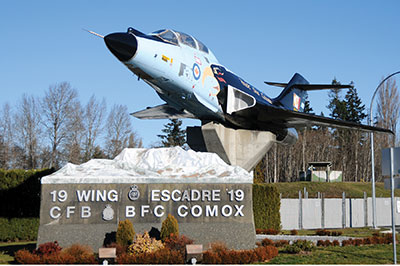
Features
Operations
Glide Path: Determining the correct identity
In 2017, which isn’t that far off, Canada will celebrate its 150th birthday.
January 10, 2014 By Paul Dixon
In 2017, which isn’t that far off, Canada will celebrate its 150th birthday. Some key procurement questions remain before the birthday celebration takes place. Will we have chosen the replacement for the CF-18 Hornet by then? How about a replacement for the aging Sea Kings?
 |
|
| The truth is, we are being held back by a lack of vision from our elected leaders. Photo: Paul Dixon
|
There’s an old saying about how any road will take you there when you don’t know where you’re headed – and it appears that’s very much the situation here in Canada. We don’t know exactly where we’re headed or even where we think we might want to go.
When it comes to the military, Canadians and our federal government have always had an awkward relationship. It’s not that we don’t value what an army, navy or air force is all about, as our willingness to volunteer in times of need has overwhelmingly been demonstrated.
We don’t have a history as a warrior nation; that is, we haven’t made it a practice to impose ourselves on our neighbours or go halfway around the world looking for a fight. When needs predicate, Canadians are amongst the first to answer the call. Part of our situation has been the challenge of establishing and maintaining a Canadian identity both at home and around the world. The apron strings that bound us to Great Britain have taken a long time to untie and now there are those who would believe that the other end of those same apron strings is tied to the United States. What we really want, however, is to be known for who we are, not for who our grandparents were or who we live next door to.
In the First World War, Canadians were integrated into the British army until Arthur Currie insisted his four Canadian Divisions fight as Canadians at Vimy Ridge, now seen as a defining moment in Canadian history. Not so well known is the struggle that Prime Minster Robert Borden mounted to get Canada and other Commonwealth countries involved in the proceedings at Versailles through 1919.
In 1939, Canadians were barely better prepared than in 1914, though the Royal Canadian Air Force (RCAF) had been established largely through the efforts of Air Marshal George Croil. In recognition of his perseverance and the effort he had put into creating the RCAF out of virtually nothing, Croil was pushed aside by the federal government. The RCAF and Canadian airmen went on to distinguish themselves in every theatre of operations.
Once again, in 1945 the volunteer soldiers, sailors and airmen wanted to doff their uniforms and get back to civilian life as quickly as possible. The tension in Europe that grew into the Cold War saw Canada take a significant role in NATO, especially with the RCAF. In the 1950s, the introduction of Canadian peacekeepers into Egypt under a plan formulated by Lester Pearson gave Canada a high profile and gave us a leadership role in an increasingly fragmented world for the next four decades.
If Pearson’s Nobel Peace Prize was a high point for Canada, the ’50s also featured what for many was the absolute low point of Canada’s identity question, when John Diefenbaker cancelled the Avro Arrow project and left us like Marlon Brando’s character in On The Waterfront, wailing that “we could have been a contender, we could have been a somebody.” It’s a moot point and we’ll never know what may have happened.
In the 1960s, as the Cold War intensified, we maintained a commitment in Europe while honing our navy into the best sub-hunters in the world. Taking a helicopter the size of the Sea King to sea on small escort ships gave these units the ability to punch well above their weight class.
In the 1990s, we decided to join the warrior class and sent our troops into Iraq and a mission in Bosnia that was anything but peaceful. Then we moved into Afghanistan and now we’ve come home from Afghanistan. The army got much of the equipment it needed to meet its mission objectives and the air force got the transport aircraft required to support it.
Now, we find ourselves needing a number of new platforms for the RCAF and are just about to get underway on a massive building project to re-invigorate the navy. But the truth is, we are being held back by a lack of vision from our elected leaders – and that’s vision, not sloganeering. We desperately need courage from the leaders of our pack. If Canada is to be able to chart its own course in the world, then what will that course be? We’d better figure it out, to see if we really are capable of being taken seriously.
Paul Dixon is freelance writer and photojournalist living in Vancouver.